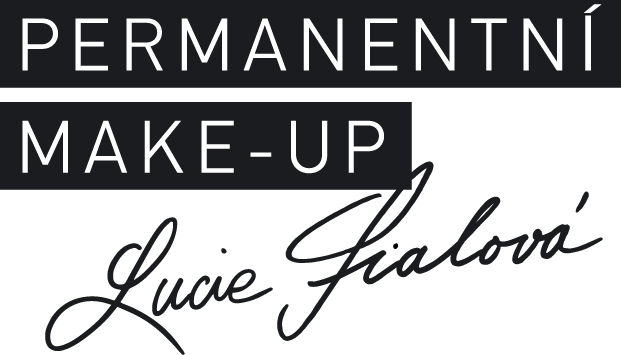What is Blockchain Technology? A Step-by-Step Guide For Beginners
Contents
As we now know, blocks on Bitcoin’s blockchain store data about monetary transactions. Today, there are more than 10,000 other cryptocurrency systems running on blockchain. But it turns out that blockchain is actually a reliable way of storing data about other types of transactions as well. Blockchains have been heralded as being a disruptive force to the finance sector, and especially with the functions of payments and banking. However, banks and decentralized blockchains are vastly different.
Perhaps the most profound facet of blockchain and Bitcoin is the ability for anyone, regardless of ethnicity, gender, or cultural background, to use it. According to The World Bank, an estimated 1.7 billion adults do not have bank accounts or any means of storing their money or wealth. As reported by Forbes, the food industry is increasingly adopting the use of blockchain to track the path and safety of food throughout the farm-to-user journey. To see how a bank differs from blockchain, let’s compare the banking system to Bitcoin’s implementation of blockchain. Blockchain technology was first outlined in 1991 by Stuart Haber and W. Scott Stornetta, two researchers who wanted to implement a system where document timestamps could not be tampered with.
Namecoin is a cryptocurrency that supports the “.bit” top-level domain . The .bit TLD is not sanctioned by ICANN, instead requiring an alternative DNS root. As of 2015, it was used by 28 websites, out of 120,000 https://coinbreakingnews.info/ registered names. Namecoin was dropped by OpenNIC in 2019, due to malware and potential other legal issues. Other blockchain alternatives to ICANN include The Handshake Network, EmerDNS, and Unstoppable Domains.
Step 1 – Record the transaction
If that information is edited in any way, then the hash code changes as well. The term cloud refers to computing services that can be accessed online. You can access Software as a Service , Product as a Service , and Infrastructure as a Service from the cloud. Cloud providers manage their hardware and infrastructure and give you access to these computing resources over the internet. They provide many more resources than just database management.If you want to join a public blockchain network, you need to provide your hardware resources to store your ledger copy.

Different types of information can be stored on a blockchain, but the most common use so far has been as a ledger for transactions. One key difference between a typical database and a blockchain is how the data is structured. A blockchain collects information together in groups, known as blocks, that hold sets of information.
Private Blockchains
All members of the blockchain have equal rights to read, edit, and validate the blockchain. People primarily use public blockchains to exchange and mine cryptocurrencies like Bitcoin, Ethereum, and Litecoin. The global financial industry has not yet been able to do much with the technology known as blockchain. […] The project was shelved because banks and other potential users believed the same results could be achieved more cheaply using current technology. The blockchain is a major boon for companies that rely on or operate supply chains.

As a result, if the data is changed in one block, it’s unique identifier changes, which can be seen in every subsequent block . This domino effect allows all users within the blockchain to know if a previous block’s data has been tampered with. Since a blockchain network is difficult to alter or destroy, it provides a resilient method of collaborative record keeping.
Traditional Finance and Blockchain Investment Strategies
The blockchain can help create a consortium of businesses and provide an operational structure with no central “leader.” This can allows multiple businesses to interact effectively and share information. Luckily solutions are being built to improve scalability and the speed of transactions. For example, the lightning network allows transactions to happen off the Bitcoin blockchain to speed up transactions.
And these are just a few of the important blockchain technology use cases that are transforming the way we trust and exchange value. Like the early internet, blockchain is hard to understand and predict, but could become ubiquitous in the exchange of digital and physical goods, information, and online platforms. Be inspired by how innovators are transforming their businesses using the IBM Blockchain Platform. You can join an existing blockchain network or work with us to create your own. We asked five artists — all new to blockchain — to create art about its key benefits. See what they made, then learn more from IBM clients and business partners in Blockparty, our new webinar series.
- They have successfully used blockchain strategy to improve productivity and reduce costs in copyright processing.
- Bitcoin is a cryptocurrency, which is an application of Blockchain, whereas Blockchain is simply an underlying technology behind Bitcoin that is implemented through various channels.
- This means that only the owner of a record can decrypt it to reveal their identity (using a public-private key pair).
- These mechanisms allow for agreement even when no single node is in charge.
- Berenberg, a German bank, believes that blockchain is an “overhyped technology” that has had a large number of “proofs of concept”, but still has major challenges, and very few success stories.
Fresh thinking in blockchain, AI and IoT for supply chain Learn how Golden State Foods is using the immutability of blockchain to trace goods through its supply chain and help ensure food quality. These blocks form a chain of data as an asset moves from place to place or ownership changes hands. The blocks confirm the exact time and sequence of transactions, and the blocks link securely together to prevent any block royal mail small parcel size from being altered or a block being inserted between two existing blocks. No participant can change or tamper with a transaction after it’s been recorded to the shared ledger. If a transaction record includes an error, a new transaction must be added to reverse the error, and both transactions are then visible. Blockchain network has its own native crypto, used to reward miners and to pay for things, including fees.
How does blockchain work?
Blockchain is a constantly growing ledger that keeps a permanent record of all the transactions that have taken place in a secure, chronological, and immutable way. It can be used for the secure transfer of money, property, contracts, etc. without requiring a third-party intermediary such as bank or government. Blockchain is a software protocol, but it could not be run without the Internet .
Cómo funciona blockchain
Drawbacks might include substantial computational power required, little or no privacy for transactions, and weak security. These are important considerations for enterprise use cases of blockchain. To speed transactions, a set of rules — called a smart contract — is stored on the blockchain and executed automatically. A smart contract can define conditions for corporate bond transfers, include terms for travel insurance to be paid and much more.
If the contents of the block are intentionally or unintentionally modified, the hash value changes, providing a way to detect data tampering. A verified transaction can involve cryptocurrency, contracts, records, or any other valuable information. Once a transaction is verified, it is combined with other blocks to create a new block of data for the ledger. One of blockchains and cryptocurrencies’ most significant advantages is also its biggest weakness. When you invest in public open-source blockchains by mining or buying cryptocurrencies and store it in your cryptocurrency wallet , only you control your money. Ethereum is a blockchain-based software platform with the native coin, ether.
What’s the Difference Between a Private Blockchain and a Public Blockchain?
Thus, the blocks and chains link securely, and you cannot edit them. Each additional block strengthens the verification of the previous block and therefore the entire blockchain. You can only stack blocks on top, and if you remove a block from the middle of the tower, the whole tower breaks.
“China selects pilot zones, application areas for blockchain project”. Some cryptocurrency developers are considering moving from the proof-of-work model to the proof-of-stake model. In 2021, a study by Cambridge University determined that Bitcoin (at 121 terawatt-hours per year) used more electricity than Argentina and the Netherlands .
Businesses who set up a private blockchain will generally set up a permissioned blockchain network. It is important to note that public blockchain networks can also be permissioned. This places restrictions on who is allowed to participate in the network and in what transactions. With a distributed ledger bdswiss that is shared among members of a network, time-wasting record reconciliations are eliminated. And to speed transactions, a set of rules — called a smart contract — can be stored on the blockchain and executed automatically. Most cryptocurrencies use blockchain technology to record transactions.


